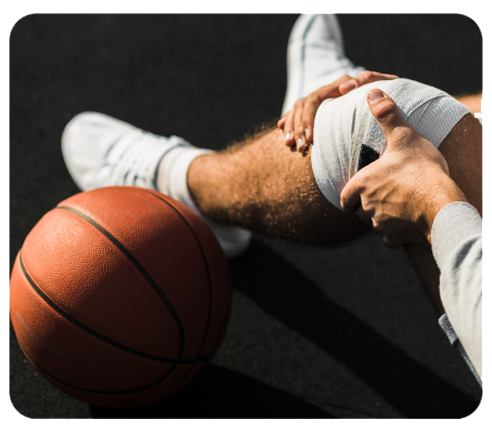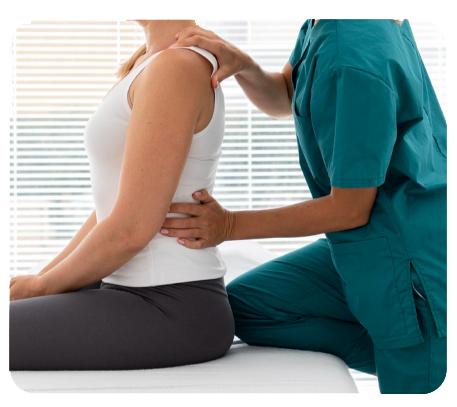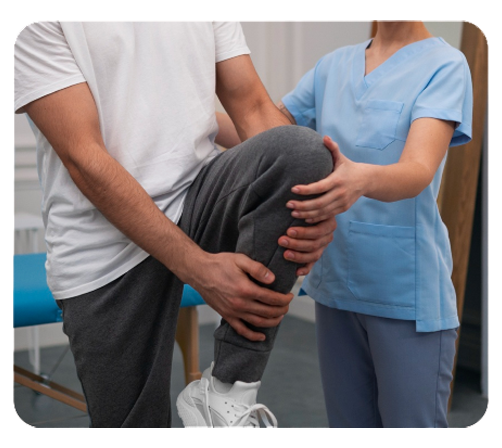Conditions We Treat
At Narrow Gate Physiotherapy, we address a wide range of musculoskeletal and neurological conditions. Our goal is to provide personalized care that targets the root cause of your discomfort, facilitating a quicker and more sustainable recovery.
Musculoskeletal
Conditions
Pain in the back, neck, or joints? We treat everyday strains, postural issues, and overuse injuries to get you moving freely again.
See More
Back & Spine
- Lower Back Pain: Strains, sprains, disc herniations, and sciatica.
- Neck Pain: Whiplash, cervical spondylosis, and posture-related issues.
- Thoracic Pain: Mid-back discomfort due to posture or muscle imbalances.
Shoulder & Arm
- Rotator Cuff Injuries: Tears, tendinitis, and impingement syndromes.
- Frozen Shoulder: Adhesive capsulitis leading to stiffness and pain.
- Elbow Conditions: Tennis elbow, golfer’s elbow, and bursitis.
Hip & Pelvis
- Hip Osteoarthritis: Degeneration causing pain and reduced mobility.
- Piriformis Syndrome: Sciatic nerve compression leading to buttock pain.
- Sacroiliac Joint Dysfunction: Pain at the base of the spine affecting movement.
Knee & Leg
- ACL/MCL Injuries: Ligament tears common in athletes.
- Patellofemoral Pain Syndrome: Kneecap tracking issues causing anterior knee pain.
- Meniscal Tears: Cartilage injuries leading to locking or clicking sensations.
Ankle & Foot
- Ankle Sprains: Ligament injuries from twists or rolls.
- Achilles Tendinopathy: Pain and stiffness in the Achilles tendon.
- Plantar Fasciitis: Heel pain due to inflammation of the plantar fascia.
Sports Injuries
From weekend sprains to athletic overuse, we treat muscle tears, joint issues, and get you back in the game—stronger than before.
See More

- Muscle Strains & Tears: Hamstring, quadriceps, and calf injuries.
- Overuse Injuries: Tendinitis and stress fractures from repetitive motions.
- Joint Dislocations: Shoulder, knee, and ankle dislocations requiring rehabilitation.
Neurological &
Postural Conditions
From nerve pain to poor posture, we help correct imbalances and reduce symptoms affecting your comfort and mobility.
See More

- Postural Dysfunction: Addressing imbalances leading to chronic pain.
- Nerve Impingements: Conditions like carpal tunnel and sciatica.
- Balance & Coordination Issues: Rehabilitation for improved stability and function.
Men's Health
Physiotherapy
Discreet support for pelvic pain, post-surgery recovery, and musculoskeletal causes of men’s health issues.
See More

- Pelvic Floor Dysfunction: Addressing incontinence and pelvic pain.
- Post-Prostatectomy Rehabilitation: Recovery and strengthening post-surgery.
- Erectile Dysfunction: Therapies targeting underlying musculoskeletal causes.
Post-Surgical
Rehabilitation
We guide your recovery after surgery with tailored programs that restore movement and prevent setbacks.
See More

- Joint Replacements: Hip, knee, and shoulder prosthetics.
- Spinal Surgeries: Discectomies, laminectomies, and fusions
- Fracture Fixations: Rehabilitation after bone realignment procedures.
Ready to Feel Stronger, Move Freer?
Start your recovery journey with Narrow Gate Physio today.
FAQ (Frequently Asked Questions)
Price & fees
As of 1/8/24, the price for an initial musculoskeletal consult is $200. An initial men’s health consult is $400.
Fees vary based on the practitioner you are with & effort/expertise spent on your case.
We offer Initial Consults (45-60 minutes), Premium Subsequents (45 minutes), Extended Subsequents (60 minutes) and Classic Subsequents (30 minutes).
Please see our online booking portal to get the most recent prices.
A proper quote on a full treatment plan (including how many visits are required) to achieve your results can only be obtained after your physiotherapist has assessed the complexity of your case in the first session.
What are your contact details?
Reception number (bookings and other enquiries by Mylee): +61 406 301 861
Jason’s clinical number (for ongoing clients and partners communications): +61 434 301 936
Fax: +61 7 4352 1071
Address: Ground Floor 436-438 Burwood Road, Belmore, NSW 2192
Do you just operate in Belmore?
We mainly operate at our Belmore practice on 2 Kent Street, Belmore NSW 2192. Follow signs for Narrow Gate Physiotherapy and Functional Doc.
436/438 Burwood Road, Belmore NSW 2192 is also available for select clients requiring a gym-based clinic and is located within 180 Shift.
We are very familiar with clients from the surrounding suburbs of Campsie Roselands Kingsgrove Wiley Park Punchbowl Beverly Hills Earlwood Canterbury Bankstown and Clemton Park.
Exclusive clients have been offered home visits. No new clients are being accepted for home visits as of 5/4/23.
What are your operating hours?
Excluding public holidays,
Narrow Gate Physiotherapy operates in Belmore as follows:
Monday, Wednesday, Friday: 8am-6pm
Tuesday, Thursday, Saturday: 8am-12pm
Sunday: Closed
Please call to confirm any bookings.
Do you offer Worker's Compensation, CTP, DVA, NDIS and Medicare-rebated
physiotherapy?
physiotherapy?
Narrow Gate Physiotherapy is SIRA & APA-insured. We offer primarily private consultations with CTP/Worker’s compensation, NDIS (National Disability Insurance Scheme), DVA (Department of Veteran Affairs) and EPC rebates with medical referrals.
Which areas of the body do you treat?
Narrow Gate Physiotherapy are experts in treating the associated muscles, tendons, joints and bones of the mentioned areas below:
Headache
Jaw (TMJ)
Neck (cervical spine)
Upper back (thoracic spine)
Lower back (lumbar spine)
Pelvis (sacroiliac spine)
Shoulder
Elbow
Wrist
Hand
Knee
Ankle
What specialties do you work with?
Narrow Gate Physiotherapy has special interest and expertise in musculoskeletal health. In particular, we work with postural dysfunction, sports injury, aged care and men’s health.
Postural dysfunction is common in sedentary populations like desk workers and people engaged in repetitive work that requires prolonged postures. We look holistically at the neck, back and shoulder joint and muscular imbalances to quickly solve this issue for good.
Sports injuries vary from gym-related, soccer, basketball, track and other high impact activities. We work closely with your goals and coach to take an ‘active recovery’ where you are still maintaining strength, flexibility and cardiorespiratory condition whilst your primary injury is healing. We always aim for fast, strong and lasting returns to sport.
Aged care is our passionate project to give back to the elders who have created the Australia we know today. We know balance, strength, flexibility & endurance are needed for easy transfers from bed, sitting and standing and to enjoy the daily activities that make retirement worthwhile. This includes getting to the floor to play with the grandkids and enjoying a sandy beach walk.
Men’s health is Narrow Gate Physiotherapy’s signature area of special interest. Men’s health physiotherapy is an emerging specialty that solves problems with prostate cancer, pelvic pain, erectile dysfunction, stress urinary incontinence, urge urinary incontinence and bowel incontinence. We use the latest research to support our holistic approach to these growing issues within men’s health.
Do you provide Men's Health Physiotherapy?
Absolutely! We are one of the few male Men’s Health Physiotherapists in Australia.
Men’s health is Narrow Gate Physiotherapy’s signature area of special interest. Men’s health physiotherapy is an emerging specialty that solves problems with prostate cancer, pelvic pain, erectile dysfunction, stress urinary incontinence, urge urinary incontinence and bowel incontinence. We use the latest research to support our holistic approach to these growing issues within men’s health.
Do I need a medical referral?
No, although a referral is always nice.
Special referrals from your GP called EPCs (Enhanced Program of Care) can be sent to us for chronic conditions (> 3 months since incidence) that can attract a government rebate of up to 5 physiotherapy sessions per year.
Do you accept private health insurance?
We accept all private health insurances on our HiCAPS machine that will instantly process your rebate claim on the spot in our clinic.
Invoices are provided on demand to you, especially for overseas insurances for you to process yourself online.
